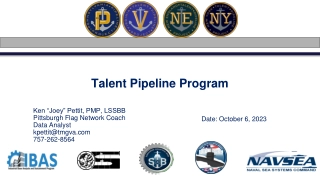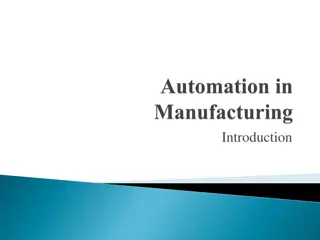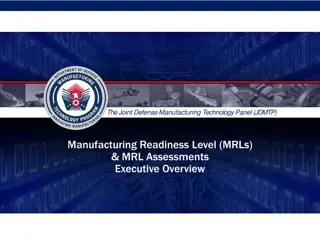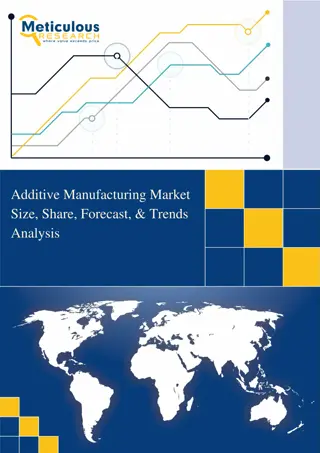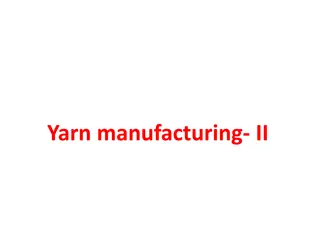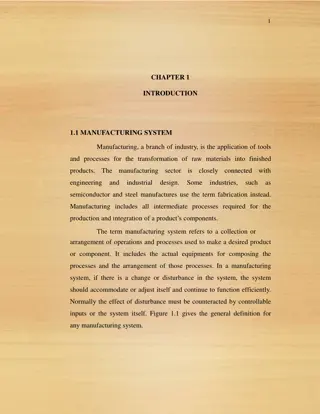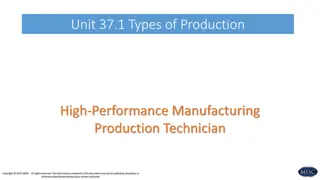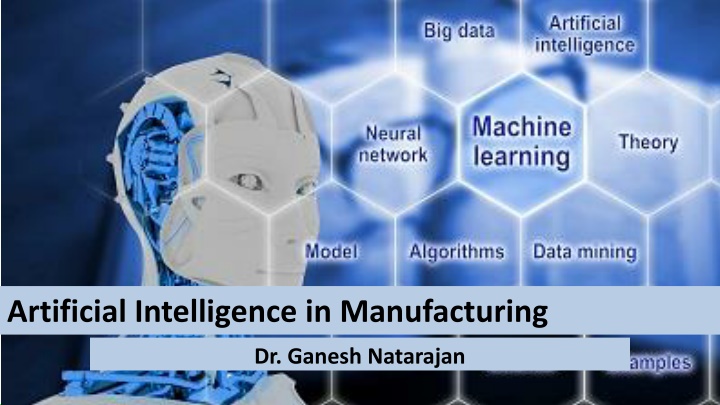
AI in Manufacturing by Dr. Ganesh Natarajan
Discover how artificial intelligence is reshaping the manufacturing industry through smart operations, predictive maintenance, human-robot collaboration, IoT integration, and digital twins. Learn about trends, strategies, and the roadmap for implementing AI and analytics in manufacturing. Get insights on leveraging machine learning, robotics, and digital security solutions to drive efficiency and innovation in the factory of the future.
Download Presentation

Please find below an Image/Link to download the presentation.
The content on the website is provided AS IS for your information and personal use only. It may not be sold, licensed, or shared on other websites without obtaining consent from the author. If you encounter any issues during the download, it is possible that the publisher has removed the file from their server.
You are allowed to download the files provided on this website for personal or commercial use, subject to the condition that they are used lawfully. All files are the property of their respective owners.
The content on the website is provided AS IS for your information and personal use only. It may not be sold, licensed, or shared on other websites without obtaining consent from the author.
E N D
Presentation Transcript
Artificial Intelligence in Manufacturing Dr. Ganesh Natarajan
The Factory of the Future Source: BCG
Trends shaping the Manufacturing sector AI and Advanced Analytics is at the core of Smart Manufacturing Predictive Maintenance Human Robotics Collaborative Ecosystems Using the power of machine learning to provide manufacturers with contextual insight and intelligence based on data captured form machinery performance and processes across the New generation of robotics capable of image and speech recognition are taking over precision operations in the factory with human workers undertaking higher-level jobs such as programming, maintaining and coordinating robotic operations. plant floor. Demand Forecasting and Inventory optimization Intelligent Factory Operations IoT is revolutionizing many aspects of manufacturing operations including real-time production monitoring, improving the accuracy of key metrics including Overall Equipment Effectiveness (OEE), production yield rates and production efficiency. AI is defining Manufacturing Robust demand forecasting based on critical demand drivers; improved decision making through structured scenario analysis. Inventory optimization using statistical modelling techniques to perform inventory stock level vs lost sales scenario analysis Application of Digital Twins Intelligent data security solutions The Digital design, simulation, and integration (DDSI) market are predicted to grow from $25B in 2016 to $45B in 2021. Simulation will enable the virtual testing of plant production system at planning stage to prevent any potential faults. The role of cybersecurity becomes even more essential today as significant operational risks for connected, smart manufacturing, digital supply networks, and entire manufacturing ecosystems emerge, highlighting risks at the intersection of cyber and physical infrastructure. Source: News Analysis, PWC, BCG
Roadmap for developing the AI and Analytics Strategy 01 Understand your starting position 02 Find a Champion 03 Define your strategy Understand the consumer expectations and then review your current maturity and identify areas for improvement Identify the right leader to sponsor innovation and change. Your COO, CFO, and CDO can help minimize internal resistance and define your new organization as you start to implement changes. 05 Deploy small pilots Determine your target maturity level and the vision that best supports your business strategy 06 Segmented rollout and capability development 04 Develop the appropriate road map These lighthouse projects should aim at testing the end-to-end flow for a specific function, rather than implementing a limited set of technologies on a broader scale Settle on the necessary implementation steps and work them into a detailed road map After a successful pilot, the rollout should start with those business areas where expected benefit is highest.


